D Day series; Arromanches, a gateway to exploring D Day History
/1.What was the importance of Arromanches in the D Day landings?
Find out about Mulberry harbour B, a remarkable engineering feat of the Allies that enabled them to consolidate their foothold in Normandy. In the Arromanches museum you can discover all about that the harbour as well as other aspects of the D Day landings. It was an extraordinary accomplishment to create a harbour where one never existed before and overcome numerous natural difficulties such as the waves and the tides.
Note; if you walk to the cafe on the right and then walk up that road , you will find some good sandwich bars and coffee places. This is not sponsored but is based on experience of being hungry and thirsty after visiting the museum!
Above and below; equipment from World War 2 shows that you have arrived at the Arromanches museum.
Above; at the heart of the Arromanches D Day museum stands a magnificent and imposing centerpiece - a large-scale model of the mulberry harbour. This intricate representation captures the essence of resilience, ingenuity, and determination that marked the historic D-Day landings. Every detail speaks volumes of the collaborative effort that went into constructing this engineering marvel. Standing before this model will transport you back to June 6, 1944 - the moment when the Allies began to turn the tides of World War II.
2. Why were the mulberry harbours built?
The harbours in Normandy were well defended and the D Day invasion troops were not going to successfully move inland if they were not regularly supplied with food, fuel, arms, munitions and more troops. The disastrous invasion of Dieppe in august 1942 showed that they needed harbours to re-supply their troops and thus the incredible decision was made to take two harbours across the channel to overcome this problem. One, Mulberry A, was to be constructed at Omaha Beach for the Americans and Mulberry B was constructed at Arromanches Beach for the British and her allies. Some experts thought the idea was absolutely crazy but against the odds it was successful. The aim was for each harbour to have capacity similar to that of the port of Dover, unloading an incredible 6000 tonnes of supplies and 1250 vehicles a day! They also had the amazing idea of laying fuel pipes under the English Channel, nicknamed PLUTO (Pipe Line Under The Ocean) to ensure there was a constant supply of fuel. Achieving these plans was a huge step on the road to winning the war. So, the impossible became the possible.
3. How were the mulberry harbours made?
Above; some models of concrete “Phoenix Caissons” have been put in place to provide a breakwater, ie a shelter for the harbour at Arromanches. It sounds incredible but the huge concrete caissons were built in secret along the shores southern England and towed across. On arrival, they were manoeuvred and then allowed to sink. In all, 147 were built for the two mulberry harbours, of which the largest weighed 6044 tonnes and was 60 metres. Outside of the caissons would be old sunken ships to add to the breakwater effect and then inside them, were the floating sections called “Whale Piers” or “Loebnitz Piers” that moved up and down with the tides so that the supply ships could be unloaded at any time of day regardless of the height of the tide. For protection, “Bofors anti-aircraft guns” were installed to shoot at any passing Luftwaffe plane. They also could release artificial fog to reduce the Luftwaffe bombers’ accuracy and had barrage balloons tied to them with trailing wires to counter any low flying enemy planes
Above; A huge map of the Mulberry B harbour with a projection onto the windows letting you know what was happening, literally, just outside the museum in 1944.
4. What can you see today of the Mulberry Harbour B?
Above; an actual caisson on the beach at low tied just outside the museum which our niece in the left of the photo went to investigate.
Below; after a visit to the museum, if you drive up to the cliffs to east of Arromanches, you will be able to see the visible remains of the caissons that form the Mulberry harbour.
Below; also at the top of the cliffs is one of the floating causeways that were used by lorries to carry the supplies to shore.
5. What else can you see in Arromanches museum?
Above and below, some stills from the videos shown at the museum.
Above; a photo showing the US Army Rangers 2nd Ranger Battalion successfully climbing the cliffs at Pointe Du Hoc with the aim of taking out 6 large guns that were, it was believed, protecting Omaha Beach three miles to the west. This incredibly brave mission saw troops get to the top amidst intense fire only to find that the guns had been recently moved! They were replaced by netted telegraph poles but were soon found only slightly further inland and put out of action.
Below; a grappling iron similar to those used in the courageous assault. It would have been attached to 90 metres of carefully coiled rope and propelled up the cliff by a 50 mm rocket. Above it, is a cardboard fibre helmet liner belonging to a medic which was found in the 1980s at Colleville-sur-Mer.
Above; a photograph on display showing Arromanches and its harbour.
Above and below; two dioramas with actual size dummies showing scenes from Arromanches.
Above;various pieces of German equipment used in the area.
Above; referred to by the museum as a “clandestine radio” but known as a “Resistance Suitcase”. It was also used by British secret agents.
Below; kit used by the Resistance to blow up railways. A photo above shows it in practice.
The beaches were covered in thousands of steel obstacles that would damage and sink landing craft. They would be just under the water at high tide and therefore, only seen when it was too late.
Below; a Napier Sabre II engine from a Hawker Typhoon “fighter bomber’. People associate the Spitfire with the beginning of the war but do not know about this highly effective plane that did so much to help win the war in 1944 and 1945. It was equipped with 8 rockets that were used successfully to destroy armoured columns and trains carrying vital supplies. One such rocket is at the bottom of the photo along with one of its four 20mm cannons.Fortunately, the pilot successfully bailed out of his stricken plane and survived his ordeal. However, the engine hit the ground with such force that it was buried 5 metres underground!
Above; the museum has loads of fascinating information to digest such as this section of a display showing the various vehicles and transport used in the landings. In the centre is the number of ships used, a colossal 6939 in total!
Above; another information board displaying all the various tank designs for carrying out specific jobs. Many were designed by Major General Percy Hobart and given the code name “funnies” although nowadays referred to as “Hobart’s funnies”. These included the “Sherman Duplex Drive”, a floating tank, the “Churchill Crocodile which had on the front a flamethrower and pulled along a tank full of fuel as ammunition.
6. What can you see from the top of the cliffs overlooking Arromanches?
Above; this is the view overlooking Arromanches, and in particular, its D Day museum that we have just described. If you are fit, you can walk up the hill to arrive at this point next to the 360degrees cinema or you can drive up to the car park (please remember to buy a parking ticket from the machine).
Above; turn around 90 degrees and you will see the remains of the caissons forming what is left of Mulberry Harbour A.
7. What is the 360 cinema at Arromanches?
Above; turn the other way and you can see the 360 cinema. This circular building as its name and shape implies, surrounds you. Whichever direction you look, there is a scene from D Day and succeeding days’, action. The film, "The 100 days of the Battle of Normandy"gives you an accurate impression and good understanding of what it was like.
Above and below; two scenes from the film.
8. What else can you see up on the cliffs at Arromanches?
Above; this is 97 year old Bill Wendell, a D Day veteran who is looking back at his 22 year old self landing on the D Day beaches 75 years ago, see below.
Above; nearby Bill’s statue is a preserved causeway from the Mulberry Harbour at Arromanches.
Below; a nearby noticeboard that show the causeway in action.
Above; you can have a good view of the surrounding area from the top of this lookout.
Below; the remaining caissons in the sea and German concrete defensive works.
9 Essential information.
Click for Arromanches museum website. This should be in English but if it isn’t, then click on the Union Jack flag on the right. At the bottom of the site is “planning your visit for opening times and ticket prices.
Find the museum at;
Place du 6 Juin
14117 Arromanches
Phone : +33 (0)2 31 22 34 31
E-mail : info@musee-arromanches.fr
Parking. We used the car park pink H which was a short walk to the museum green H2. Although, there several car parks, most are small and we advise that you get there early. Arromanches is quite popular in holiday periods but it is not to be missed. We later drove to the car park at blue H3 for the cliff view and 360 degree cinema.


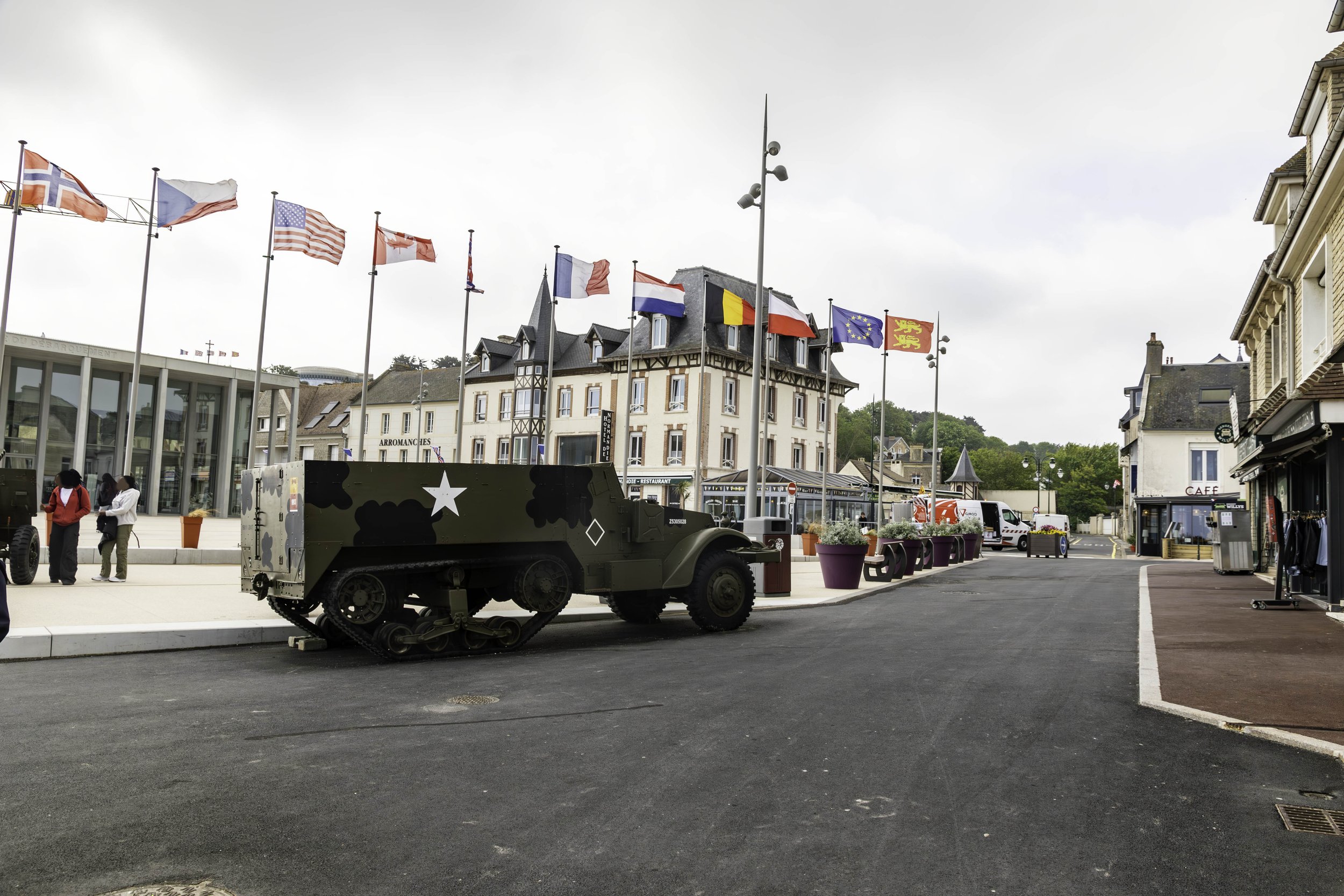






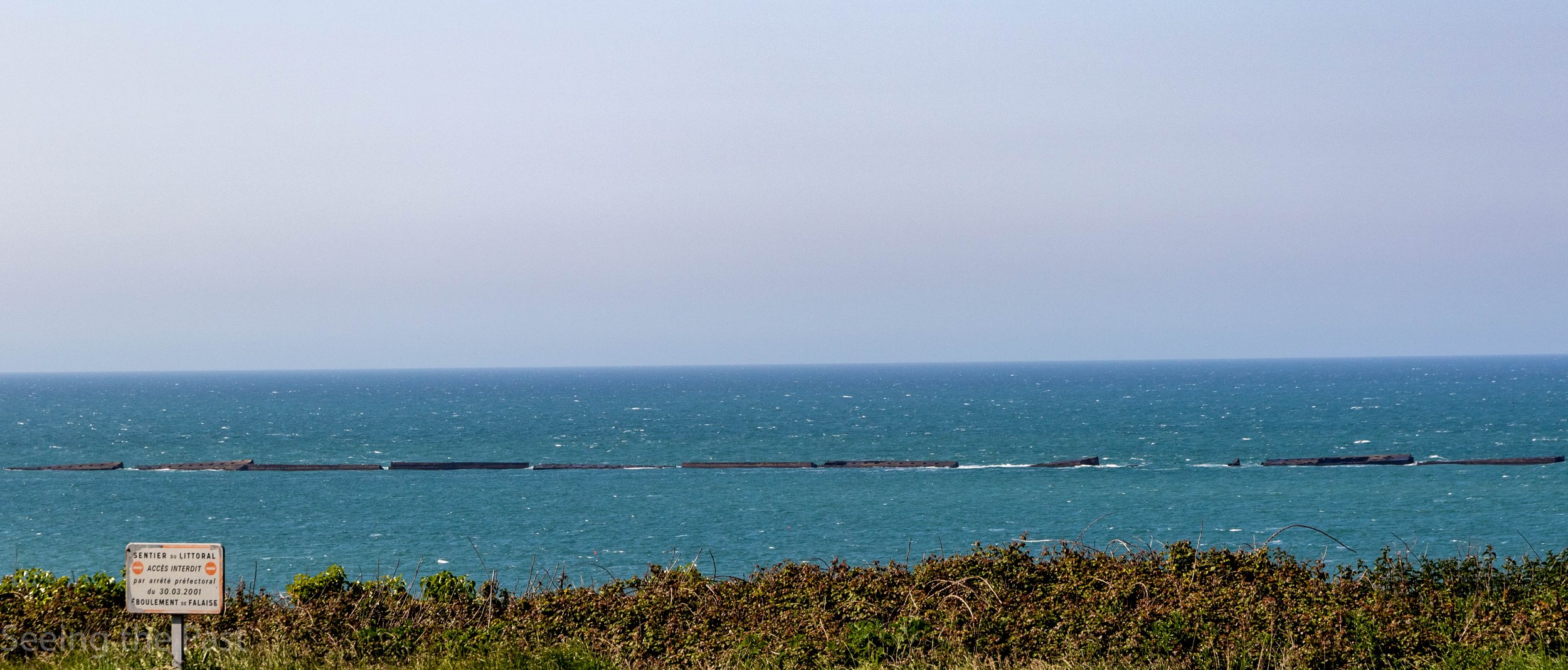







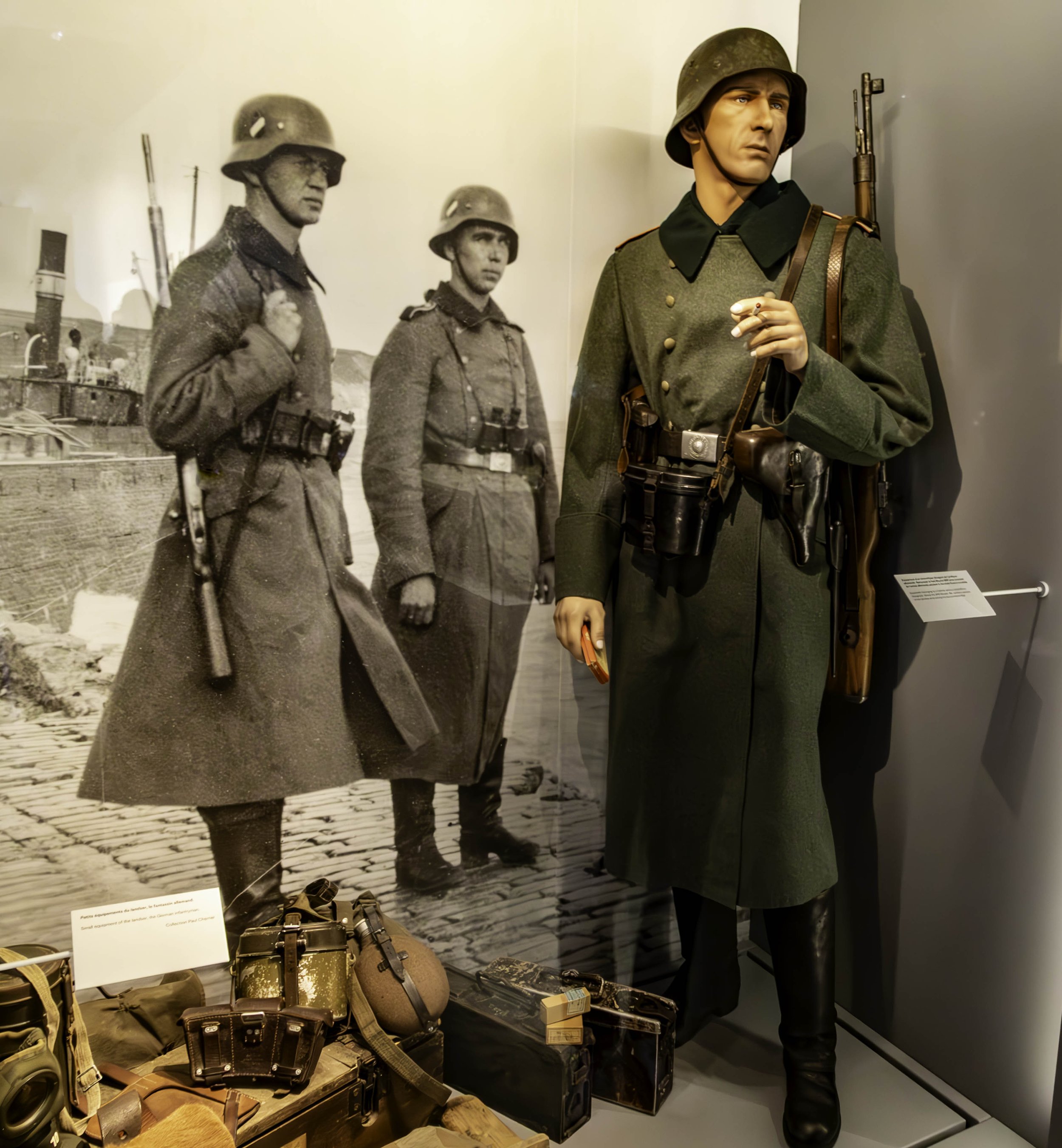


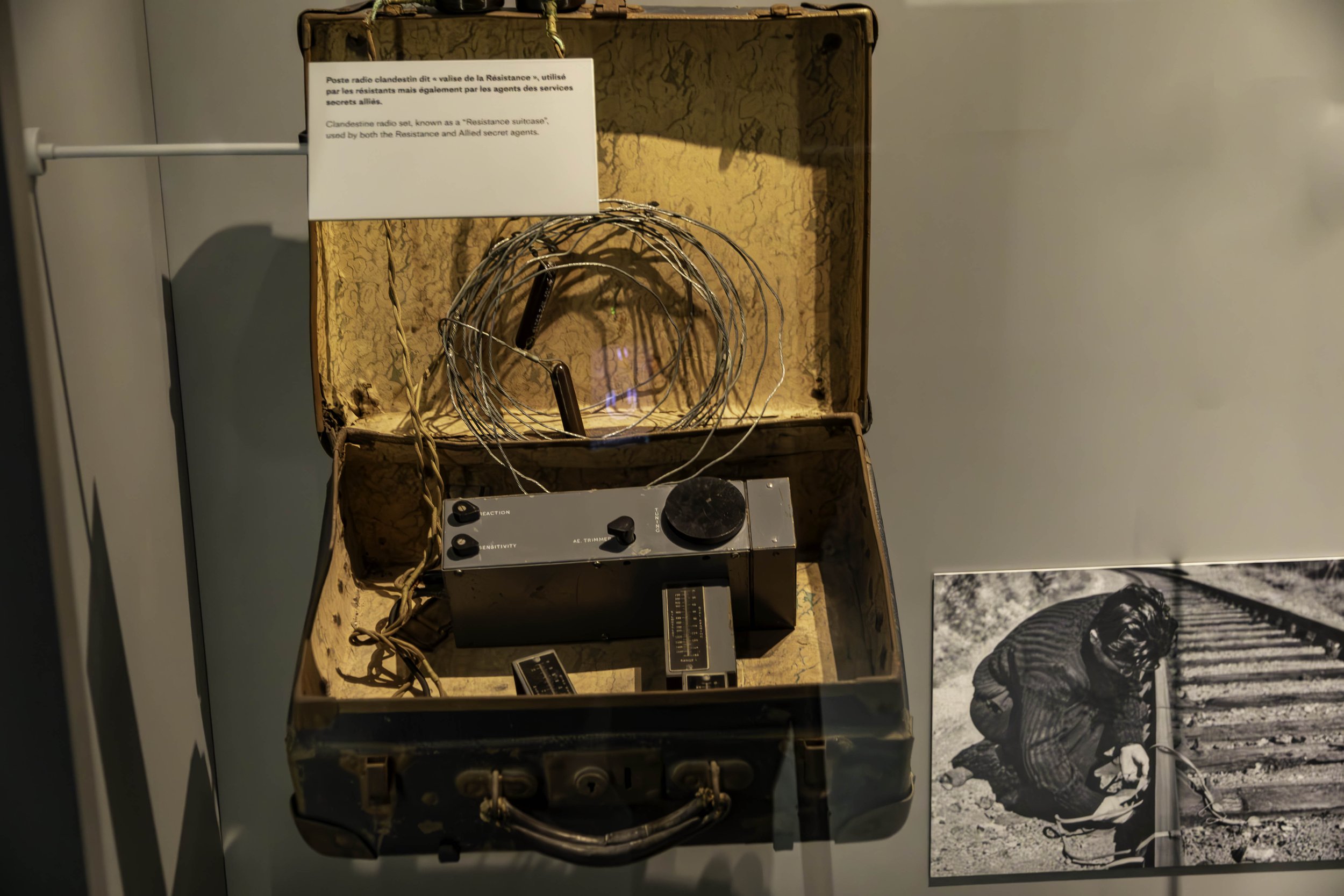








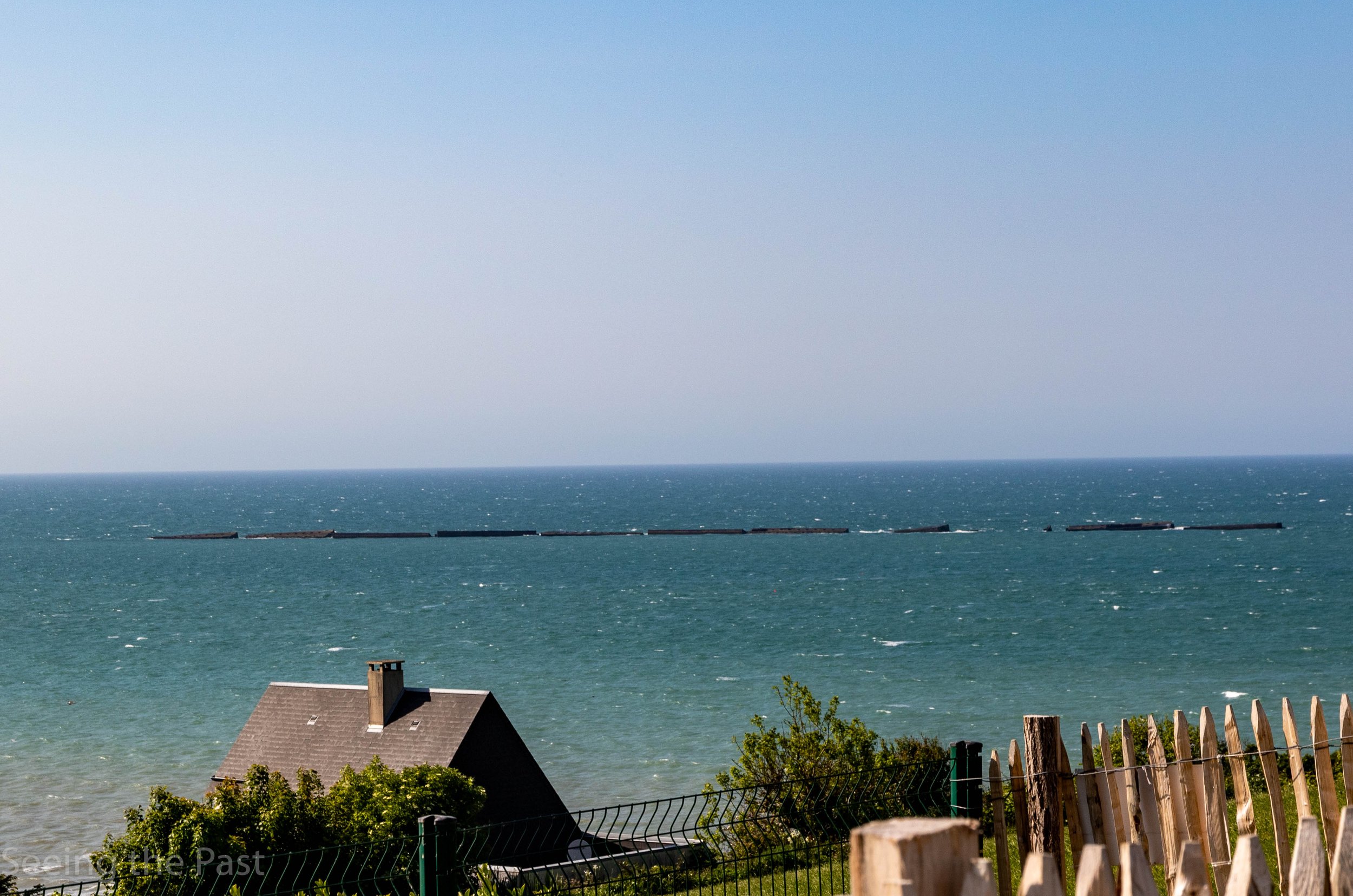





















A day’s wandering around this area of Coventry will present you with hundreds of years of history to discover. You will be able to visit the ruins of the 14th and 15th century church of St Michael that became a cathedral in 1918 as well as the new one next door.. About 160 metres away or a two minute walk, is Holy Trinity church with its amazing Medieval “Doom Painting” which some people believe is the best one in Britain. One minute away, is the wonderful and free Herbert Art Gallery and Museum.